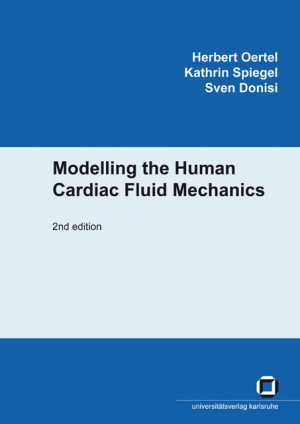Sven Donisi / Kathrin Spiegel / Herbert Oertel
Modelling the Human Cardiac Fluid Mechanics
In the second edition of the article a virtual heart model simulating the flow in the active left human ventricle and atrium is presented. Because in vivo myocardium data is not available, the movement of the active ventricle and its atrium is given by three-dimensional, time-dependent invivo image data of a nuclear spin MRI tomograph. The passive part of the virtual heart model consists of a model aorta and of two-dimensionally modelled heart valves. As the flow is actively driven by the ventricle and atrium, a coupling off low and structure is necessary to take into account the deviation of the aorta and the closing and opening of the heart valves. This coupling is replaced by the movement given by MRI tomograph and ultrasonic Doppler echocardiography, since we focus on the flow simulation in the left pumping ventricle. The flow simulation is performed by a validated commercial software package that uses the finite volume method. The flow resistance of the circulation through the body is taken into account with a simplified circulation model. The article shows how the virtual heart model can be used to predict flow losses and flow structures due to pathological ventricle contraction defects. It provides as an example the flow simulation of an unhealthy human ventricle with an aneurysm. The flow structure and flow losses are considered before and after surgery.

